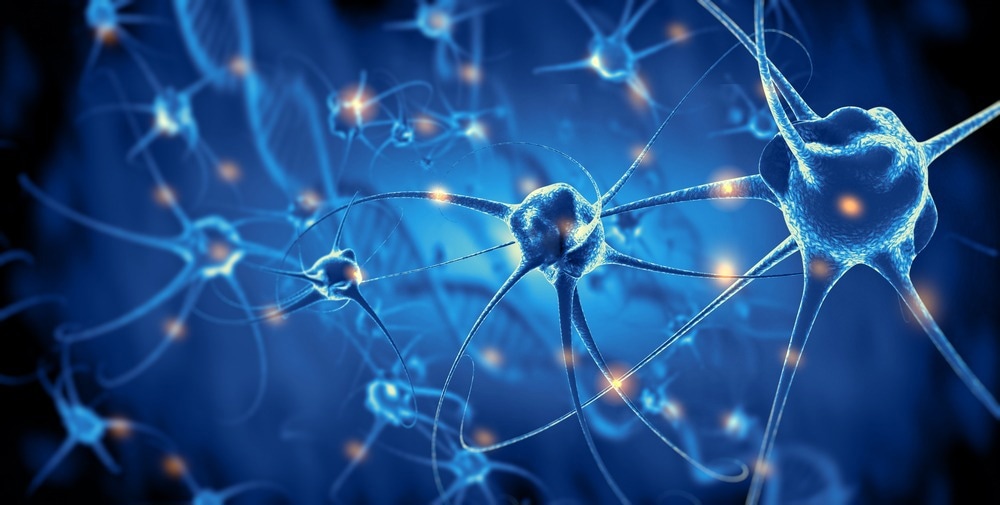Reviewed by Danielle Ellis, B.Sc.Nov 9 2023
Memory, a crucial aspect of human survival, is intricately connected to how humans encode, retrieve, and react to external stimuli.
 Labeling of intraregional synapses using LCD-eGRASP in the basolateral amygdala (BLA). Engram cells (Red), Non-engram cells (White), synapses from activated inhibitory interneurons (yellow), and synapses from non-activated inhibitory interneurons (cyan). Image Credit: Institute for Basic Science.
Labeling of intraregional synapses using LCD-eGRASP in the basolateral amygdala (BLA). Engram cells (Red), Non-engram cells (White), synapses from activated inhibitory interneurons (yellow), and synapses from non-activated inhibitory interneurons (cyan). Image Credit: Institute for Basic Science.
Over the last decade, substantial research has honed in on engram cells, the memory-encoding cells, and their synaptic connections. This focus has predominantly centered on excitatory neurons and the neurotransmitter glutamate, highlighting their interplay across specific brain regions.
To deepen the comprehension of memory, a team led by Bong-Kiun Kaang from Seoul National University, Institute of Basic Science, pioneered LCD-eGRASP (local circuit dual-eGRASP) technology. This innovation allows the labeling of synapses within a designated brain region’s neural circuits.
The researchers applied this technology to uncover local synaptic connections between inhibitory interneurons and engram cells, shedding light on the role of inhibitory interneurons in memory expression. Their investigation targeted the basolateral amygdala (BLA), a well-preserved brain region in vertebrates responsible for regulating positive and negative emotions, especially fear.

Image Credit: Giovanni Cancemi/Shutterstock.com
In the event of a fear-related experience, neurons activated during that specific moment become engram cells, encoding the fear memory. Subsequent activity of these engram cells in the BLA triggers a fear response during fear memory recall.
The neural structure facilitating signal transduction between these engram cells is known as synapses, functioning as a brain's functional unit, akin to individual transistors in semiconductor devices.
Dr Kaang, a prominent figure in the field of memory and engram at the synapse level, previously developed Dual-eGRASP technology. This method selectively labels synapses between engram cells, known as engram synapses, using cyan and yellow fluorescence to distinguish between synapses formed between presynaptic and postsynaptic non-engram or engram neurons.
However, this technology had limitations in examining changes between excitatory neurons and long-distance brain regions. To overcome this, the researchers improved Dual-eGRASP to create LCD-eGRASP, a modified version capable of marking local synaptic connections within a single brain region.
Testing this newly developed technology in mice, the researchers found that during fear memory formation, a specific population of inhibitory neurons in the BLA, called somatostatin (SOM) interneurons, was activated. Through LCD-eGRASP, they demonstrated that these activated SOM interneurons formed more synapses with fear engram cells in the BLA.
Furthermore, these specific SOM interneurons exhibited higher cellular excitability than non-activated SOM interneurons in a neutral context, indicating the suppression of fear expression by inhibiting fear engram. During fear memory recall, their excitability decreased.
Activating or inhibiting these SOM interneurons artificially resulted in direct and indirect changes in fear memory expression and behavioral responses, underscoring the significant role of inhibitory interneurons in proper memory recall within an engram ensemble.
We were able to go a step further from the previous study of excitatory engram cells and identify the role of inhibitory interneurons in regulating local brain circuits. This mechanism indicates that fear memories and behaviors are well controlled in normal situations and are recalled appropriately according to external stimuli.”
Dr Bong-Kiun Kaang, Research Team Head, Seoul National University, Institute of Basic Science
LCD-eGRASP introduces potential avenues for future exploration in studying disorders like post-traumatic stress disorders, where memory modulation can be achieved through the regulation of inhibitory interneurons.
LCD-eGRASP, which can mark synapses in a local region of the brain, along with Dual-eGRASP, a conventional interregional synaptic labeling technology in the brain, will establish a core technology in the field of neuroscience.”
Dr Bong-Kiun Kaang, Research Team Head, Seoul National University, Institute of Basic Science
Source:
Journal reference:
Kim, T., et al. (2023) Activated somatostatin interneurons orchestrate memory microcircuits. Neuron. doi.org/10.1016/j.neuron.2023.10.013.